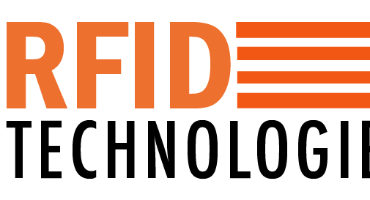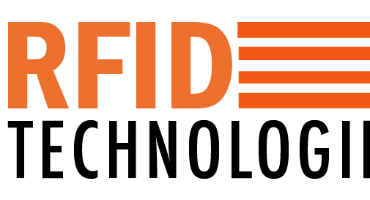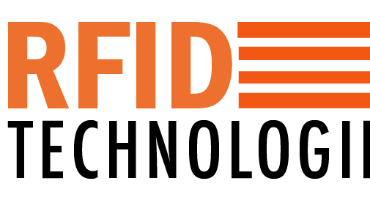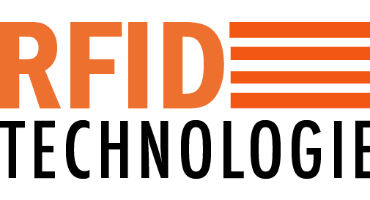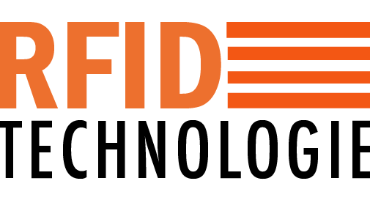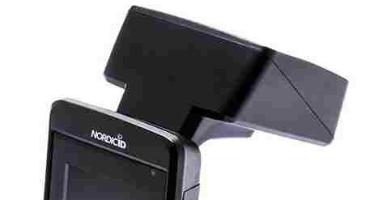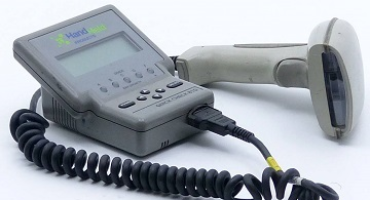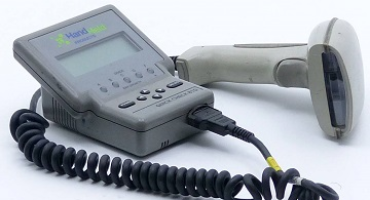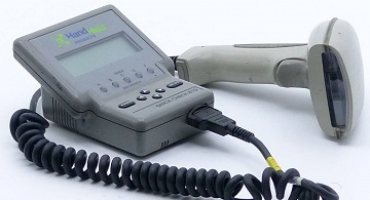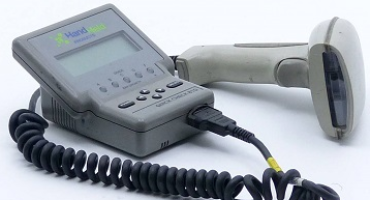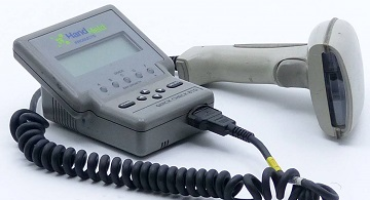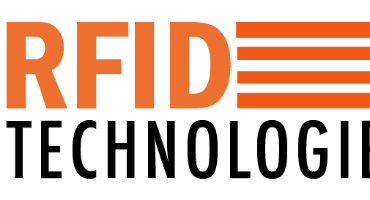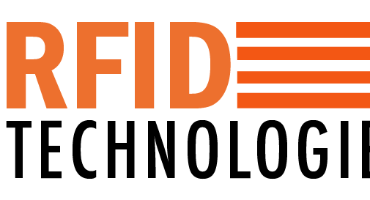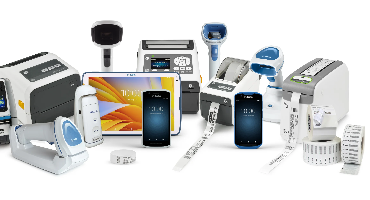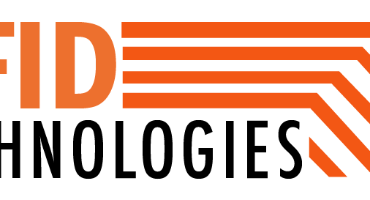Frequency Bands: RFID systems operate in different frequency bands, including low frequency (LF), high frequency (HF), and ultra-high frequency (UHF). Each frequency band has its own advantages and is suitable for different applications. RFID Passive verses RFID Active Tags: RFID tags can be passive, meaning they don't have their own power source and rely on the energy transmitted by the reader to operate, or active, meaning they have their own power source (such as a battery) and can transmit signals independently. RFID Uses & Applications: RFID technology is widely used across various industries for purposes such as inventory management, asset tracking, supply chain management, access control, and contactless payment systems. Security Considerations: While RFID technology offers many benefits, including efficiency and convenience, there are also security concerns related to data privacy and unauthorized access. Encryption and authentication mechanisms are often implemented to mitigate these risks. Interoperability: Standards such as Electronic Product Code (EPC) are important for ensuring interoperability among different RFID systems and components, allowing seamless communication and integration in complex environments. RFID technology has become an integral part of modern logistics and inventory management, offering significant advantages over traditional barcode systems in terms of speed, convenience, and flexibility.
News & Insights
RFID (Radio Frequency Identification) technology has become increasingly prevalent in various industries due to its ability to efficiently identify and track objects without requiring line of sight. Here's a breakdown of how RFID systems work and their components: RFID Tags: Tags are small devices that consist of a microchip and an antenna. The microchip stores data, which can range from a unique identification number to more complex information about the object to which the tag is attached. The antenna enables communication between the tag and the RFID reader by sending and receiving radio waves. RFID Readers: Readers are devices that emit radio waves and receive signals from RFID tags within their range.They are responsible for activating the tags and receiving the data transmitted by them. Readers can be fixed in a specific location (e.g., doorway, warehouse entrance) or portable, allowing for mobile tracking of objects. Working Principle:When an RFID reader comes into range of an RFID tag, it emits radio waves through its antenna. These radio waves power the tag's microchip, allowing it to transmit its stored data back to the reader via the antenna. The RFID reader then captures the transmitted data and processes it. Depending on the application, the reader may simply record the tag's ID or may perform more complex tasks such as updating information stored on the tag. Key Features and Advantages:Non-line-of-sight: Unlike traditional barcodes, RFID tags do not need to be visible to the reader for scanning to occur. They can be embedded within objects or placed in hard-to-reach locations. Read-only vs. Read-write: RFID tags can be either read-only or read-write. Read-only tags have their data permanently stored during manufacturing and cannot be changed. Read-write tags allow for data to be updated or modified multiple times. Efficiency: RFID technology enables rapid identification and tracking of objects, making it ideal for applications requiring inventry
RFID technology has found widespread applications across various industries due to its ability to provide real-time tracking and identification of objects without requiring direct line of sight. Here are some key points about RFID technology: Components of an RFID System: RFID Tags: Small devices containing a chip and an antenna. Tags can be passive, active, or battery-assisted passive (BAP). Passive tags do not have their own power source and are activated by the reader's signal. Active tags have their own power source and can transmit signals independently. BAP tags are similar to passive tags but have a small battery to boost the signal. RFID Readers: Devices that emit radio waves to communicate with tags. They capture data from tags and send it to a computer system for processing. RFID Antennas: Used by both tags and readers to transmit and receive radio waves. Operation of RFID technologies: When a RFID reader emits radio waves, tags within its range respond by sending back their unique identification number. The RFID reader captures this data and sends it to a computer system, where it can be processed and used for various applications such as inventory management, access control, and supply chain tracking. Advantages of RFID technologies:: Non-line-of-sight: RFID tags can be read even if they are not visible to the reader, allowing for seamless tracking in various environments. High-speed reading: RFID systems can quickly read multiple tags simultaneously, making them suitable for applications requiring fast data collection. Durability: RFID tags can withstand harsh environmental conditions, including exposure to water, chemicals, and extreme temperatures. Data storage: Depending on the type of tag, information can be stored permanently or updated dynamically, allowing for flexibility in data management. Applications of RFID technologies: Inventory management: RFID is widely used in retail, manufacturing, and logistics
Radio Frequency Identification (RFID) technology has revolutionized various industries by providing efficient tracking and identification solutions. Here's a breakdown of its key components and functionalities: RFID Tags: RFID Tags are small devices containing an integrated circuit (chip) and an antenna. These RFID tags come in various forms, such as passive, active, and semi-passive. Passive RFID tags do not have their power source and rely on the energy emitted by the RFID reader to power them. Active RFID tags have their power source (usually a battery) and can transmit signals over longer distances and at higher frequencies. Semi-passive RFID tags have a battery to power the chip but rely on the RFID reader for communication. RFID Tags can be read-only or read-write. In read-only mode, the information stored in the tag is fixed and cannot be altered. In read-write mode, data can be both read from and written to the tag, allowing for dynamic information updates. RFID Readers: RFID Readers are devices that emit radio waves to communicate with RFID tags. They consist of an antenna to send and receive signals and a transceiver (transmitter-receiver) for signal processing. RFID Readers can be fixed, handheld, or integrated into other systems. Depending on the type of RFID system and application, readers can have different read ranges and frequencies. Operation of RFID Technologies: When a reader emits radio waves within its range, it energizes the RFID tag. The energized RFID tag then reflects back a signal containing its unique identification number (ID) and possibly other data stored on the tag. The RFID reader captures this signal and processes the information. The data collected by the reader can be used for various applications such as inventory management, access control, supply chain management, and asset tracking. Advantages of RFID Technologies:RFID offers several advantages over traditional barcode systems, including: No line-of-sight requirement: RFID
RFID technology has various applications across industries due to its ability to provide real-time tracking and identification of objects. Some common applications include: Inventory Management: RFID tags are used to track inventory in warehouses and retail stores without the need for manual scanning of barcodes. This leads to improved efficiency and accuracy in inventory management. Supply Chain Management: RFID enables tracking of goods throughout the supply chain, from manufacturing to distribution to retail. This helps in reducing errors, minimizing stockouts, and improving overall supply chain visibility. Asset Tracking: Companies use RFID to track valuable assets such as equipment, tools, and vehicles. This ensures better utilization of assets, reduces losses, and enables timely maintenance and servicing. Access Control and Security: RFID is used for access control systems in buildings, offices, and parking lots. Employees or authorized personnel can use RFID-enabled cards or badges to gain access to restricted areas. Retail and Apparel: In the retail sector, RFID tags are embedded in clothing and other products to enable quick and efficient inventory management, reduce theft, and enhance the shopping experience through features like self-checkout. Transportation and Logistics: RFID is used in transportation and logistics for tracking shipments, containers, and vehicles in real-time. This improves efficiency, enhances security, and provides better visibility into the movement of goods. Healthcare: RFID tags are used in hospitals and healthcare facilities to track medical equipment, supplies, and even patients. This helps in inventory management, preventing loss of equipment, and ensuring the right equipment is available when needed. Document and File Tracking: RFID tags can be attached to documents, files, and archives for easy tracking and management in offices, libraries, and archives.
A perfect UHF RFID Reader Evaluation Development Kit tool to get started your RFID testing and development of your RFID solution with Nordic ID Medea UHF RFID 1D & 2D Laser Barcode Scanner and UHF RFID Reader Mobile Computer is indeed designed for quick, accurate, and reliable data collection for asset tracking purposes such as equipment and tools. It can monitor returnable transport items and more, facilitating the management of incoming and outgoing stock with RFID portals on dock doors. Its capabilities contribute to keeping assets safe, visible in real-time, and increasing data efficiency. Nordic ID Medea UHF RFID 1D & 2D Laser Barcode Scanner and UHF RFID Reader Mobile Computer has a large and robust daylight readable with 4.3inch touchscreen high processing capability and it has a 7000mAh battery operates a full working day with only one charge Nordic ID Medea UHF RFID 1D & 2D Laser Mobile Computer - Nordic ID Medea is designed for quick, accurate and reliable data collection whether it is for purely barcode reading, short-range RFID reading or heavy-duty RFID inventory. Nordic ID Medea RFID Reader is an ideal contemporary data collection tool. The mobile computer is equipped with a large 4.3” touchscreen with an increased processing capability. The new processing capability enables developing more sophisticated and smoothly running applications offering users an ease-of-use experience. The Gorilla Glass 2 touchscreen provides a high screen quality and robustness. Nordic ID Medea UHF RFID Cross Dipole ensures versatile usability whilst delivering high performance with a large-size touchscreen. The device is equipped with a foldable Cross Dipole antenna that can be operated in two different positions Ð either the antenna folded or unfolded for easier handling of the device. Nordic ID Medea UHF RFID 1D & 2D Laser Mobile Computer Adaptive Cross Dipole One, 1D & 2D Laser Barcode Scanner, Wi-Fi - (WLAN a/b/g/n), ESTI - EU/UK NordicID Part Number: HTG00021
You can still buy refurbished Honeywell Handheld Products Quick Check QC810 Barcode Verifier or have your faulty one repaired - Honeywell QuickCheck Verifiers is a full-featured bar code verifier compatible with all major linear bar code symbologies and reads all industry applications (SCC retail shipping-UCC/EAN ITF, UCC/EAN 128; UPC Coupon Code; AIAG; LOGMARS; HIBCC; SISAC; CTIA/ABCD; Bookland; CCBBA). Hand Held Products QC800 series verifiers analyze bar code quality against traditional quality parameters and ANSI/CEN/ISO bar code print quality guidelines. Refurbished Honeywell HandHeld Products Quick Check QC810 Barcode Verifier are in very good condition and comes with a 30-Days guarantee We also repair the Honeywell QuickCheck Verifiers and come with a 30-Days guarantee QC810 Barcode Verifier is both a quick and easy to use pass/fail tester for bar code symbols and a powerful measuring tool for detailed testing of these same symbols. All the information you need to interpret overall symbol quality is available. Quick Check QC810 Barcode Verifier offers the convenience of simple aim-and-shoot verification through the use of a QC3800V CCD type barcode reader, a customized IT3800 hand held linear imager. The Quick Check QC810 Barcode Verifier analyze 1D barcode quality against traditional quality parameters and ANSI/CEN/ISO bar code print quality guidelines. This verifier unit is housed in a compact and lightweight impact resistant case.It is suitable for desktop use in the office and is easily carried for portable verification in the field. Features of the Quick Check QC810 Barcode Verifier: Test and verifies to ANSI/CEN/ISO and Traditional Quality Parameters standards Menu-Driven for Easy Use LCD and LEDs Display Test Results Instantly Command Codes for Instant Programming Barcode reproduction accuracy is critical through-out the distribution supply chain, especially in an era of stringent compliance programs. Hand Held Products assures that you can prod
Honeywell Handheld QC810 portable or desktop barcode verification enables for simple 1D linear screening to complete ISO/IEC compliance. Barcode accuracy is very important in the supply chain, the Honeywell Handheld QC810 portable or desktop barcode verifier ensures that you can produce, receive and use bar codes that meet requirements to ensure customer satisfaction. The Honeywell Handheld QC810 portable or desktop barcode verifier is an essential tool for businesses operating in industries where barcode accuracy is crucial, particularly in the supply chain. By providing simple 1D linear screening, it facilitates the verification process to ensure compliance with ISO/IEC standards. Mobile & Portability: As a handheld device, the QC810 barcode verifier offers convenience and flexibility, allowing users to verify barcodes on-the-go. This is especially useful for quality control checks during various stages of production, receiving, and distribution. Desktop Capability: The device can also be used as a desktop verifier, providing versatility in its application. This allows for efficient verification processes in different work environments. ISO/IEC Compliance: The QC810 barcode verifier is designed to help businesses meet ISO/IEC requirements for barcode quality. By ensuring that barcodes meet these standards, companies can avoid potential issues such as shipment delays, inventory errors, and customer dissatisfaction. Enhanced Customer Satisfaction: Accurate barcodes are essential for smooth operations within the supply chain. By utilizing the QC810 barcode verifier, businesses can minimize the risk of errors and discrepancies, leading to improved customer satisfaction. Streamlined Operations: With reliable barcode verification capabilities, the Honeywell QC810 contributes to streamlined operations. It helps in reducing rework, minimizing waste, and optimizing efficiency throughout the supply chain.
Honeywell Quickcheck QC810 Barcode verification barcode to full retail barcode quality control to testing traditional and full ANSI/CEN/ISO parameters for supermarket barcode checkour scanning requirements For supermarket checkout scanning requirements, ensuring the quality of barcodes is crucial for smooth transactions and inventory management. The Honeywell QuickCheck QC810 barcode verifier can be instrumental in maintaining high-quality barcodes that meet retail standards. Here's how it can address the specific needs of supermarket checkout scanning: Scanning and Analysis: The Honeywell HandHeld Products Quick Check QC810 Barcode Verifier scans each barcode at the checkout counter and analyzes its quality in real-time. It assesses parameters such as bar and space dimensions, contrast, quiet zones, and print quality to ensure accurate and reliable scanning. Verification: Honeywell HandHeld Products Quick Check QC810 Barcode Verifier compares the scanned barcode against ANSI/CEN/ISO parameters specifically tailored for retail barcode standards. This includes criteria such as symbol contrast, modulation, defects, and print growth, ensuring that the barcode meets retail industry requirements. Quality Control Testing: Honeywell HandHeld Products Quick Check QC810 Barcode Verifier assigns a grade to each barcode based on its analysis. This grade indicates whether the barcode meets the stringent quality standards required for reliable scanning at the checkout. Barcodes that fail to meet these standards can be flagged for further action. Reporting: Honeywell HandHeld Products Quick Check QC810 Barcode Verifier generates reports for each scanned barcode, providing detailed information on its quality and any issues identified during the verification process. This allows store personnel to take corrective measures promptly, such as re-printing or re-labeling barcodes that do not meet the required standards. Compliance: Adhering to ANSI/CEN/ISO parameters for retail
Honeywell Quickcheck QC810 Barcode verification barcode to full barcode quality control to testing traditional and full ANSI/CEN/ISO parameters Honeywell QuickCheck QC810 is a barcode verifier designed to ensure that barcodes meet quality standards according to various industry specifications, including ANSI (American National Standards Institute), CEN (European Committee for Standardization), and ISO (International Organization for Standardization). Here's how it typically works: Scanning and Analysis: The QC810 scans the barcode and analyzes it to determine its quality. It examines various aspects of the barcode, such as bar and space dimensions, contrast, edge roughness, quiet zones, and overall print quality. Verification: The verifier compares the scanned barcode against predetermined criteria set forth in ANSI/CEN/ISO standards. These criteria encompass parameters like symbol contrast, modulation, defects, and print growth. Quality Control Testing: Based on the analysis, the QC810 assigns a grade to the barcode. This grade indicates whether the barcode meets the specified quality standards. Grades typically range from A to F, with A being the highest quality and F indicating failure to meet minimal standards. Reporting: The QC810 generates reports detailing the results of the verification process. These reports provide comprehensive information about the barcode's quality, including any issues or discrepancies found. Compliance: The verifier ensures that the barcode complies with relevant industry standards, ensuring interoperability and readability across different systems and devices. Calibration and Maintenance: Periodic calibration and maintenance of the verifier are necessary to ensure accurate and reliable performance over time. Honeywell QuickCheck QC810 barcode verifier offers a comprehensive solution for barcode quality control, enabling businesses to maintain high standards and compliance with industry regulations.
Honeywell QuickCheck QC810 is a barcode verification device designed to ensure barcode quality according to various industry standards, including ANSI (American National Standards Institute), CEN (European Committee for Standardization), and ISO (International Organization for Standardization). Here's how you can perform barcode quality control testing using the Honeywell QuickCheck QC810: Setup and Calibration: Before starting the verification process, ensure that the QC810 is properly set up and calibrated according to the manufacturer's instructions. Scanning the Barcode: Place the barcode under the scanner of the Honeywell QuickCheck QC810. Ensure that the barcode is positioned correctly and that there are no obstructions or reflections that could interfere with the scanning process. Verification Process: Initiate the verification process on the Honeywell QuickCheck QC810. The device will analyze the barcode based on various parameters specified by ANSI/CEN/ISO standards. Evaluation of Parameters: The Honeywell QuickCheck QC810 will evaluate the barcode based on parameters such as bar width, bar height, print contrast, modulation, defects, quiet zones, etc. These parameters are crucial for ensuring barcode readability and reliability in different scanning environments. Comparison with Standards: Honeywell QuickCheck QC810 compares the quality of the scanned barcode against the predefined standards set by ANSI, CEN, or ISO. It will indicate whether the barcode meets the required quality standards or if it fails to comply. Detailed Analysis: The device typically provides a detailed analysis report indicating the specific areas where the barcode may be failing to meet the standards. This information is helpful for identifying and correcting any issues in the barcode printing process.Adjustments and Corrections: If the barcode fails to meet the required standards, adjustments can be made to the printing process to improve barcode quality.
How RFID UHF technology is used for Asset Tracking and Management to Track key and valuable assets with attached RFID tags labels in manufacturing, logistics, and warehousing, enabling fixed asset inventory audits, locating assets, and tracking their movement in real-time. RFID UHF technology is indeed an excellent solution for asset tracking and management across various industries such as manufacturing, logistics, and warehousing. Here's how RFID UHF facilitates these processes: Efficient Asset Inventory Audits: Traditional asset inventory audits can be time-consuming and prone to errors. RFID UHF technology allows for quick and accurate asset identification without line-of-sight requirements. By simply scanning RFID tags attached to assets, inventory audits become faster and more efficient, reducing labor costs and minimizing disruptions to operations. Real-Time Asset Location Tracking: RFID UHF tags enable real-time tracking of assets within a facility or across multiple locations. By deploying fixed RFID readers at strategic points or using mobile RFID readers, businesses can continuously monitor the movement of assets. This capability helps in preventing loss or theft of valuable assets and ensures that assets are always available when needed. Enhanced Asset Visibility: With RFID UHF technology, organizations gain better visibility into their asset inventory. They can track the status, condition, and usage history of assets, allowing for informed decision-making regarding asset allocation, maintenance schedules, and lifecycle management. This visibility leads to improved asset utilization and reduced instances of underutilized or misplaced assets. Streamlined Workflow Processes: By automating asset tracking and management with RFID UHF technology, organizations can streamline workflow processes. Employees spend less time searching for assets, reducing downtime and improving overall operational efficiency. Additionally, automated data capture and integrat
How mobile RFID (Radio Frequency Identification) UHF (Ultra-High Frequency) readers and barcode scanners indeed offer significant advantages across various industries. Here are some key benefits: Increased Flexibility: Mobile RFID UHF readers and barcode scanners allow workers to access and collect data from virtually anywhere, whether it's a warehouse floor, a retail store, or a construction site. This flexibility enables real-time tracking and monitoring of inventory, assets, and processes. Improved Efficiency: With mobile readers, workers can quickly scan items without the need to manually record data. This streamlines workflows, reduces human error, and speeds up tasks such as inventory management, order picking, and asset tracking. As a result, operational efficiency is greatly enhanced. Mobile Device Integration Capabilities: Many mobile RFID readers and barcode scanners can be seamlessly integrated with smartphones, tablets, or other mobile devices. This integration enables users to leverage the computing power of their existing devices, eliminating the need for additional hardware and reducing costs. Moreover, it allows for easy access to data, analytics, and business applications on the go. On-the-Go Scanning Capabilities: Whether it's scanning items on store shelves, tracking assets in transit, or managing inventory in a warehouse, mobile RFID readers and barcode scanners empower workers to perform tasks in real-time, without being tethered to a fixed workstation. This mobility enables rapid data capture and decision-making, leading to improved responsiveness and agility in dynamic environments. Industries such as retail, logistics, manufacturing, healthcare, and transportation can greatly benefit from the deployment of mobile RFID UHF readers and barcode scanners. These technologies not only enhance operational efficiency but also enable better visibility, accuracy, and control over critical assets and processes.
Are interested in an RFID (Radio-Frequency Identification) solution for asset tracking using the Impinj R720 UHF RFID Reader, Alien ALR-8698 UHF RFID Antenna, and a UHF RFID Tag sample pack. RFID technology is commonly used for asset tracking and management in various industries. Here's a brief overview of the components you mentioned: Impinj R720 UHF RFID Reader: The Impinj R720 is a high-performance UHF RFID reader designed for enterprise-grade applications. It supports the EPCglobal Gen2V2 standard and provides fast and accurate RFID tag reading. It's suitable for applications such as inventory management, asset tracking, and logistics. Alien ALR-8698 UHF RFID Antenna: The Alien ALR-8698 is a UHF RFID antenna designed to work with RFID readers like the Impinj R720. Antennas are crucial components in RFID systems as they transmit and receive radio waves to communicate with RFID tags. UHF RFID Tag Sample Pack: This pack likely contains a variety of UHF RFID tags that can be attached to assets for tracking purposes. UHF RFID tags are commonly used in asset tracking due to their longer read ranges and faster data transfer rates. UHF RFID Reader Kit for Demonstration: This kit provides a comprehensive solution for demonstrating, evaluating, and developing RFID-based asset tracking solutions. It allows you to explore the capabilities of the RFID reader, antenna, and tags in a controlled environment. Key Use Cases: Asset Tracking: You can use this RFID kit to track and manage valuable assets in real-time, improving efficiency and reducing manual errors. Inventory Management: Implement RFID tags on inventory items to streamline inventory counts and replenishment processes. Logistics and Supply Chain: Enhance visibility in the supply chain by tracking goods throughout the distribution process.

